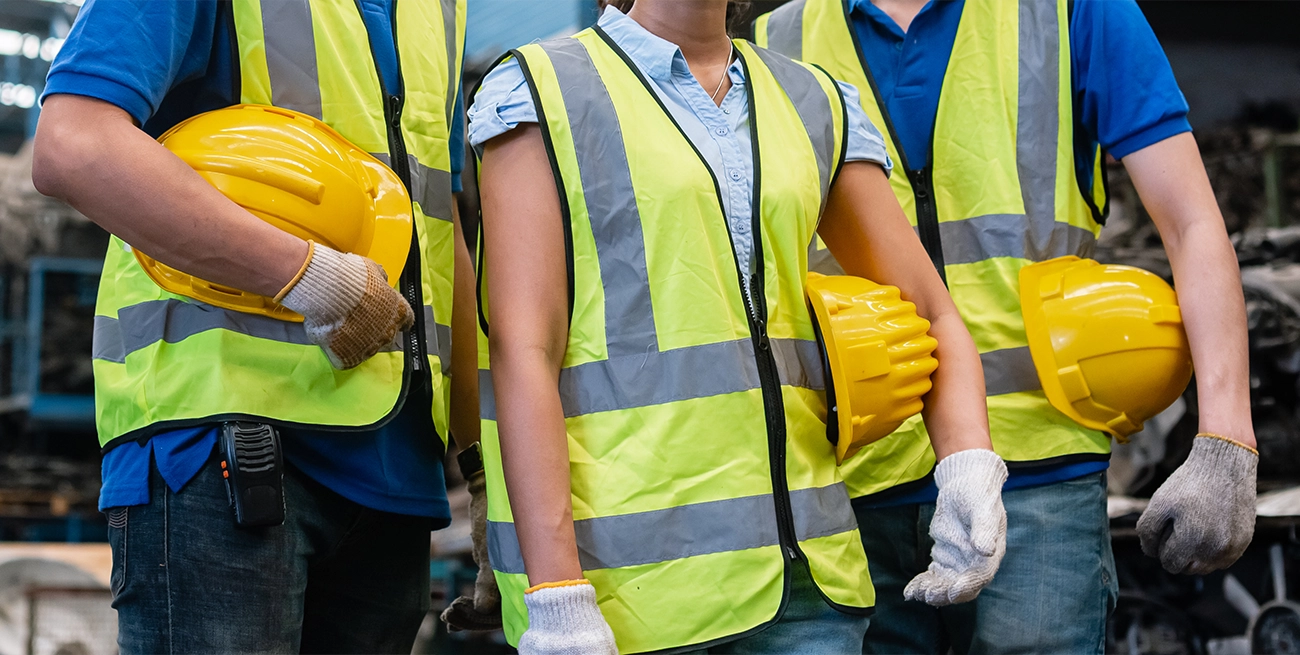The Role of Hi-Vis Clothing in Preventing Workplace Accidents

On a busy worksite, the constant movement of machinery, vehicles, and personnel creates an environment where visibility is everything. Workers crossing a yard, handling equipment, or guiding trucks face the ever-present danger of not being seen in time. This is where high-visibility (hi-vis) clothing becomes indispensable. It’s not just about compliance; it’s about making sure that every worker stands out in the chaos of the jobsite.
Why Visibility Matters
Picture a worker navigating through a dimly lit warehouse or a foggy highway construction zone. Without clothing designed to catch the eye, they become another element blending into the environment. This lack of distinction can lead to accidents, especially in areas with moving equipment or vehicles. Bright, reflective gear ensures workers remain noticeable in even the most visually challenging conditions.
How Hi-Vis Clothing Works
Hi-vis clothing is designed to make wearers stand out against their surroundings. It achieves this through a combination of fluorescent colors and reflective materials. Fluorescent colors, such as neon yellow, orange, and lime green, are highly visible during daylight hours, even in low-light conditions like overcast skies. Reflective strips amplify visibility under artificial light or headlights, making the wearer easy to spot after dark.
For the gear to function effectively, placement and quality of the reflective material matter. Strips are typically arranged on jackets, pants, and vests to outline the human form, enabling drivers or machine operators to recognize the worker as a person rather than a stationary object.
Common Applications of Hi-Vis Gear
Hi-vis gear isn’t reserved for a single industry; it plays a crucial role across various fields. Construction sites, warehouses, roadwork zones, and ports are prime examples of environments where visibility can save lives. Workers in these spaces often contend with heavy machinery, fast-moving vehicles, and low-visibility conditions.
- Construction Sites: Between equipment like cranes, forklifts, and dump trucks, ensuring workers are visible to operators reduces the likelihood of accidents.
- Roadside Jobs: Highway maintenance crews and flaggers are particularly vulnerable, especially at night or during inclement weather. Hi-vis gear helps drivers spot them well in advance.
- Warehouses: Forklift operators need to navigate tight spaces, and workers wearing hi-vis gear are less likely to be struck accidentally.
- Utilities and Emergency Services: Electricians, lineworkers, and first responders often operate in high-risk conditions, making visibility a key safety factor.
Meeting Industry Standards
Hi-vis gear isn’t just about grabbing the brightest shirt on the rack; it must meet safety standards. In the United States, the American National Standards Institute (ANSI) sets the guidelines for reflective clothing. ANSI categorizes hi-vis garments into classes based on the level of visibility they provide and the intended work environment.
- Class 1: Suitable for workers in low-risk environments, such as parking attendants, where traffic doesn’t exceed 25 mph.
- Class 2: Ideal for construction and utility workers exposed to moderate risk, often involving traffic speeds up to 50 mph.
- Class 3: Provides the highest level of visibility, intended for highway workers and emergency responders operating near high-speed traffic.
Ensuring workers have the right class of gear for their job reduces risks significantly.
What to Look for When Purchasing Hi-Vis Clothing
Not all hi-vis gear is created equal. When buying for your team, consider the following:
- Durability: Work environments are tough on clothing. Look for hi-vis gear made from sturdy materials that can withstand abrasion, exposure to chemicals, and regular washing.
- Comfort: Uncomfortable gear leads to non-compliance. Lightweight, breathable fabrics make it easier for workers to stay cool in warm conditions or layer up in the cold.
- Proper Fit: Ill-fitting clothing can hinder movement and be a hazard in itself. Ensure gear fits snugly without being restrictive.
- Visibility in Specific Conditions: Some worksites have unique challenges, such as dusty or smoky environments. Gear designed for these scenarios often incorporates extra reflective surfaces or specialized fabrics.
Addressing Worker Compliance
Even the best gear is useless if it isn’t worn. Workers sometimes resist wearing hi-vis clothing due to discomfort, fit issues, or a lack of understanding about its importance. Employers can address these concerns by involving workers in the selection process, ensuring they’re comfortable with the gear provided.
Regular training also helps. Workers who understand how hi-vis gear protects them are more likely to wear it consistently. Highlighting real-life examples of accidents that could have been prevented with proper visibility can drive the point home.
The Connection Between Visibility and Productivity
While safety is the primary concern, hi-vis clothing has another benefit: it keeps teams efficient. On a busy site, workers can locate each other quickly when everyone stands out. Whether coordinating tasks or avoiding collisions, the ability to see where everyone is improves communication and workflow.
Hi-Vis Beyond the Worksite
Hi-vis clothing isn’t limited to industrial settings. Cyclists, joggers, and even dog walkers use it to stay visible in traffic. The same principles apply: being seen is the first step to staying safe.
Future Trends in Hi-Vis Gear
Innovation continues to make hi-vis clothing better. Manufacturers are experimenting with new fabrics that combine comfort with durability, as well as smart tech integration. Some hi-vis gear now includes LED lighting for enhanced visibility or sensors that alert workers to nearby hazards. These advancements make safety gear more effective and appealing.
Wrapping Up
Hi-vis clothing is more than a bright vest or jacket—it’s a lifesaving tool that keeps workers visible and safe. By understanding its importance, investing in quality gear, and fostering a culture of compliance, businesses can significantly reduce workplace accidents. Visibility isn’t just a detail; it’s a priority for every worker stepping onto a jobsite. When everyone is seen, everyone stays safe.


